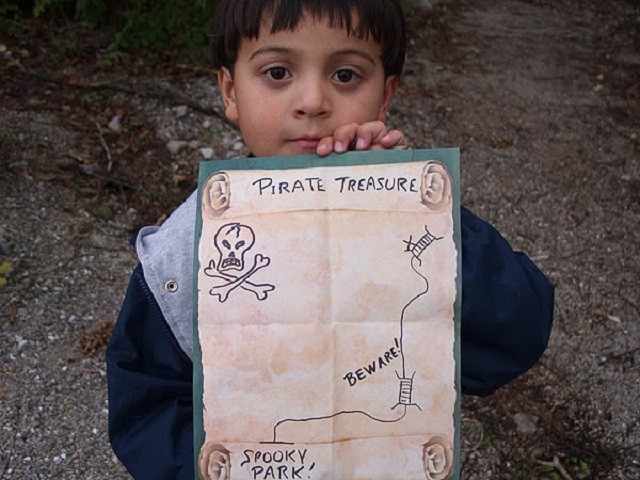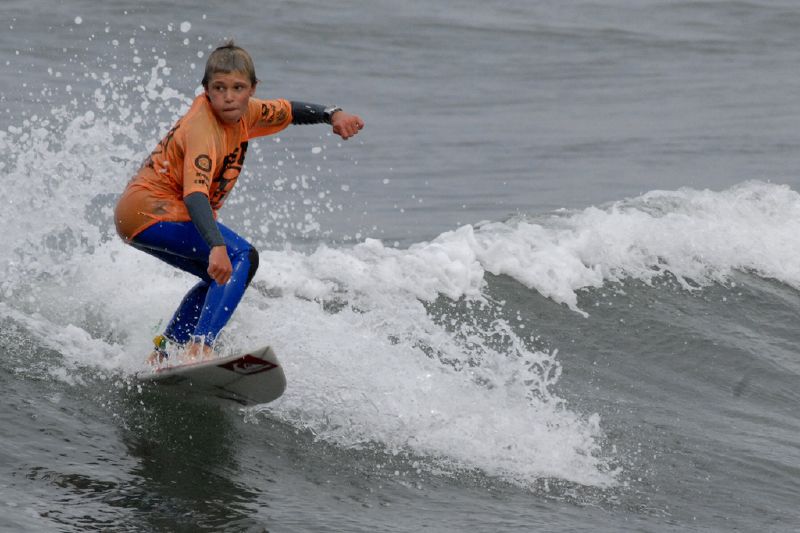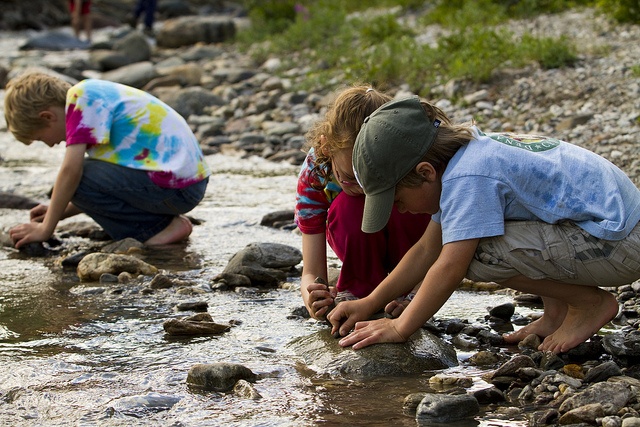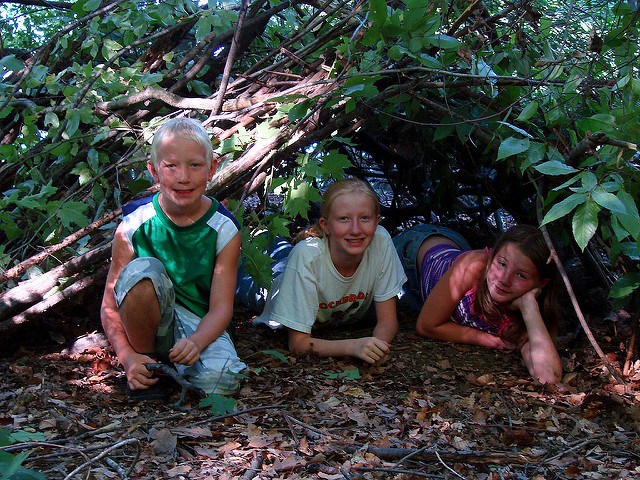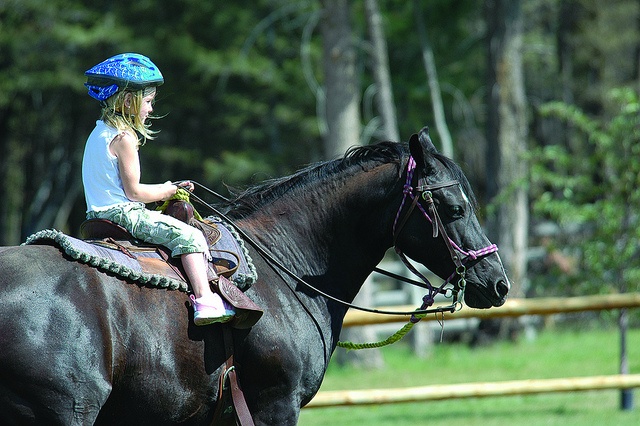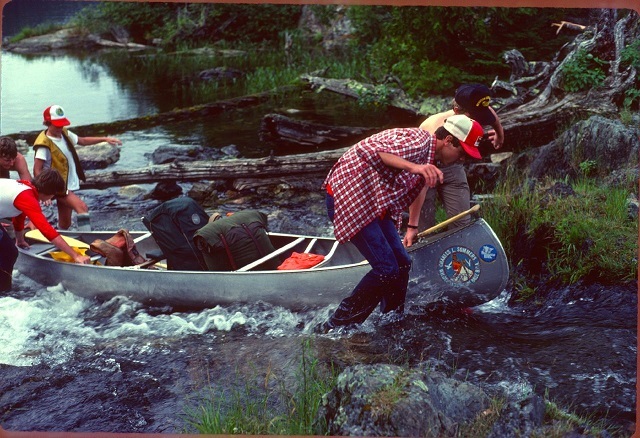Outdoors, you’ll have experiences that engage all of the senses. The deep green of a pine forest, the sharp, bright scent of pine needles, the rugged texture of bark, the sweet yet bitter taste of cocoa from a thermos, the sound of rust-orange needles crunching beneath the feet… There’s only so much a computer screen can teach kids. The rest – the unbidden lessons that engage the entire being – come from nature.
If you think about it, hunting for treasure is every kid’s dream. Ever seen The Goonies? That’s what I thought. Bury some fake doubloons and create your own map, pirate-style. Then set off on an adventure. Or, if you want to get official, there are metal detectors made for kids. Take them on a real hunt for coins, lost jewelry, and trinkets. A great educational exercise is to research the area first before you take them out. You’ll learn a great deal of history and geography. When you’re actually hunting, you’ll notice geographical features you never noticed before.
This is another activity kids love, but for many, it’s just a pipe-dream. Why not change that for your child? Kids make for great surfers because it’s a high energy sport and kids have less fear than adults. To kids, surfers are just plain cool. Contrary to the typical image, surfing’s not all about twenty-foot waves and beach-bumming it. Start small. Consult surfing tips for beginners. Find a used board at least one foot taller than your child (and yourself, since you’ll be doing it too!). A wetsuit is important because you’ll be spending a lot of time in the water. Find a less crowded area. You might want to hire an instructor. Then go, and if your kid likes it, why no make it a regular thing?
Yes, kids act like they don’t want to go to a camp. But you don’t always have to listen to the complaints – in this case, complaints stem from a fear of the unknown. Great memories come from camp, and the bad ones, well, they give your kid a story to tell and adversity to overcome. But it does help to put careful thought into which camp is right for your child. Consider tips on finding the right camp. There are over 11,000 camps in the U.S., so you’ll want to think about whether it should be co-ed, religious, sports-oriented, highly structured, lengthy, etc.
I don’t know what it is about fishing, but many a kid has a knack for it. The whole beginner’s luck cliché rings true. Kids don’t try too hard when they fish, and if you’ve ever been fishing before, you know trying too hard doesn’t work. To get your kid interested in fishing, don’t overwhelm them with an intense, hard, long experience. Provide them with polarized glasses, which eliminate glare on the water. Take them out on a nice day, bring snacks, plan ahead, and if you’re fly-fishing, check out a Tenkara rod. They’re simple—rod, line, fly—the easiest fly rod to learn on.
A fort can be as big or little as you want, depending on how big or little your kid is. Do it in your backyard, or do it in the wilderness. The backyard fort is as simple as sheets over a lower branch or a clothesline. Or use scrap wood and nail together a basic hut. In the woods, gather branches and create a lean-to. Kids love forts so much because their imagination knows no bounds.
Whether your kid is old enough to hop on a horse, or at pony-riding age, this is an exciting activity for kids. Doubtless, you remember the connection you shared with animals as a child. Horseback riding takes that connection to the trail and gives them a chance to learn about these magnificent animals. Before you put them on a trail horse, consider lessons and whether or not they’re ready. Get professional input, and help them understand the sensitivities of horses. Once they’re ready, riding can help them build confidence, strength, coordination, and focus.
Find a river or lake, hopefully, one with an island, and take off on a canoe. This is the type of adventure any kid wants to experience. Time on the water with just you and your child is peak quality time. Make sure you bring life vests in case the unexpected happens. Also bring snacks, lunch, and basic survival supplies. Give your kid a chance to row. Especially if your child has never done this before, you won’t believe their enthusiasm.
The great thing about flying a kite is that it doesn’t take a lot to build one. Get a plastic bag, kite string, two sticks, scissors, and ribbon. Tie the sticks together like a cross, then cut the bag in a diamond shape to fit. Tie the bag to the frame. Tie the flying string onto the horizontal stick. On the end of the kite, tie ribbon for balance. Then, find a windy place and let it go! This actually takes a lot of practice and work with the wind, but it’s a blast.
This is a great chance for kids to learn about different animals, and it’s a classic activity for kids. It’s also a great chance for you to let them make up their own mind on whether they agree with the idea of zoos, to begin with. At the end of the day, the zoo requires a lot of walking and a lot of observation. These are both good for kids.
Can’t forget this one! Hiking is fun for young and old. There are some fantastic destinations for hikes, such as Yosemite’s Valley Floor Loop, the Appalachian Trail, Jay Peak, and more. These can be the focal point of your next vacation. Find a hiking stick for yourself and your child, all the better if it’s a stick you whittle until it’s smooth. Get the supplies and set off to immerse yourself in nature, in the engagement of all your senses. You and your child will never forget the experiences you have on your hikes. Featured photo credit: flickr.com via flickr.com
